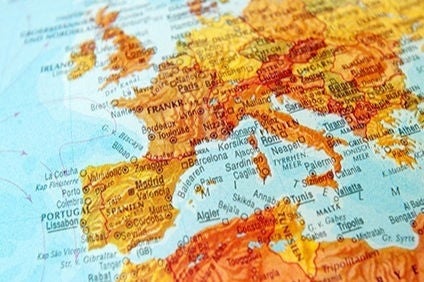
Euratex has issued a warning that due to limited alternatives to the use of gas in different parts of the production process, production costs are set to increase sharply and has asked the European Commission and member states to support the industry to avoid company closures.
The industry needs a safe supply with sufficient green energy (electricity and gas) at internationally competitive prices, Euratex says, and EU-policy should support solutions such as targeted subsidies for hydrogen, energy grids, research and development, and technology roadmap studies.
The warning sits alongside Euratex’s new white paper called ‘Ten Steps Towards Climate Neutrality, which was presented to Kadri Simson, European commissioner for energy. The paper outlines the steps Euratex says are necessary for its long-term vision – to move towards climate neutrality while keeping the textile and clothing industry internationally competitive.
Euratex explains the textile and apparel industry, which employs 1.47m workers and with over EUR53bn (US$59.7bn) of exports, is an essential part of many local economies across many EU regions.
The paper states that over the past 20 years the European textile industry has reduced its fossil fuel-based energy intensity by more than 60% and is committed to further decarbonise. However, a further transformation to a low-carbon textile industry will largely depend on new breakthrough technologies for the existing processes.

US Tariffs are shifting - will you react or anticipate?
Don’t let policy changes catch you off guard. Stay proactive with real-time data and expert analysis.
By GlobalDataThis transformation needs to be considered in a broader global environment, the paper goes on to explain, in which the European textile industry operates and solutions have to be found which take into account the international competitiveness of the industry.
Euratex says it is working to achieve a favourable environment within the EU for the design, development, manufacture and marketing of textile and clothing products and it is working with institutions and other European and international stakeholders.
In 2020 Euratex urged the EU to act swiftly to build a more resilient clothing sector.
The ten steps presented within the paper are:
- The apparel and textile industry needs a safe supply with sufficient green energy (electricity and gas) at internationally competitive prices.
- The transformation of industry requires access to very significant amounts of renewable energy at competitive costs. Additional investments in infrastructure will also be needed to guarantee access to new renewable energy supplies.
- Until a global (or at least G20 level) carbon price or other means for a global level playing field in climate protection are implemented, competitive prices for green energy must be granted at European or national levels (e.g. CCfDs, reduction on levies, targeted subsidies).
- As the European textile and apparel sector faces global competition mainly from countries/regions with less stringent climate ambitions, it is of utmost importance that the European textile and clothing companies are prevented from direct and indirect carbon leakage.
- EU-policy should support solutions, e.g. through targeted subsidies (for hydrogen, energy grids, R&D, technology roadmap studies etc.).
- A dedicated approach for SMEs might be appropriate as SMEs do not have the skills/know-how to improve their energy efficiency and/or become carbon neutral.
- CAPEX (capital expenditure) and OPEX (operating expenditure) support will be necessary for breakthrough technologies, like hydrogen.
- The Fit-for-55-Package must support the European Textile and Clothing industry in decarbonisation and carbon neutrality. The EU must advocate a global level playing field more than before. The primary goal must be to establish an internationally uniform, binding CO2 pricing, preferably in the form of a standard at G7 / G20 level.
- EU-policy must not hinder solutions, e.g. we need reasonable state aid rules (compensating the gap between national energy or climate levies and a globally competitive energy price should not be seen as a subsidy).
- The European textile and apparel industry has made use of economically viable potentials to continuously improve energy efficiency over many years and decades. The obligation to implement further measures must be taken considering investment cycles that are in line with practice. Attention must be paid to the proportionality of costs without weakening the competitive position in the EU internal market or with competitors outside the EU.



